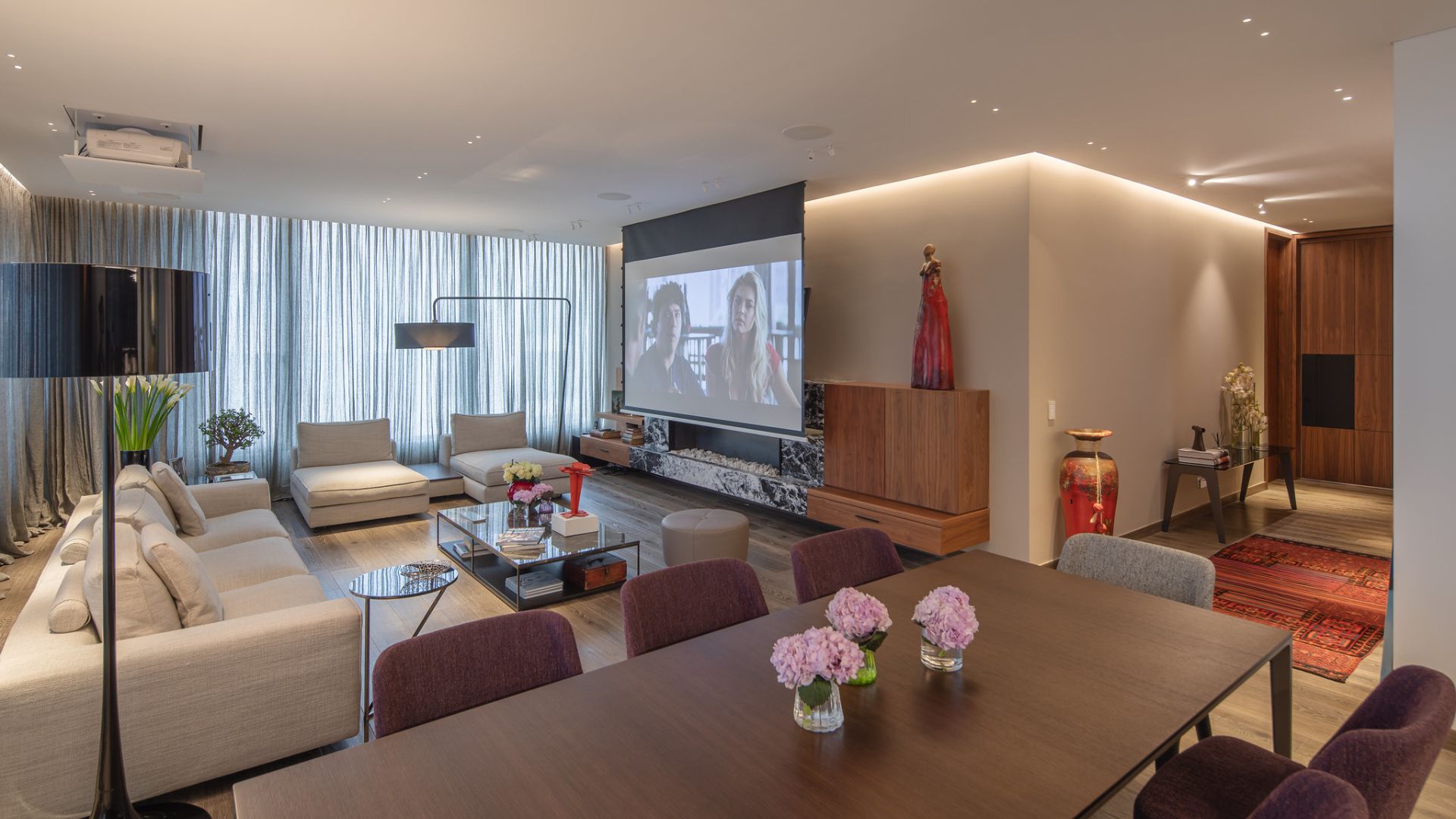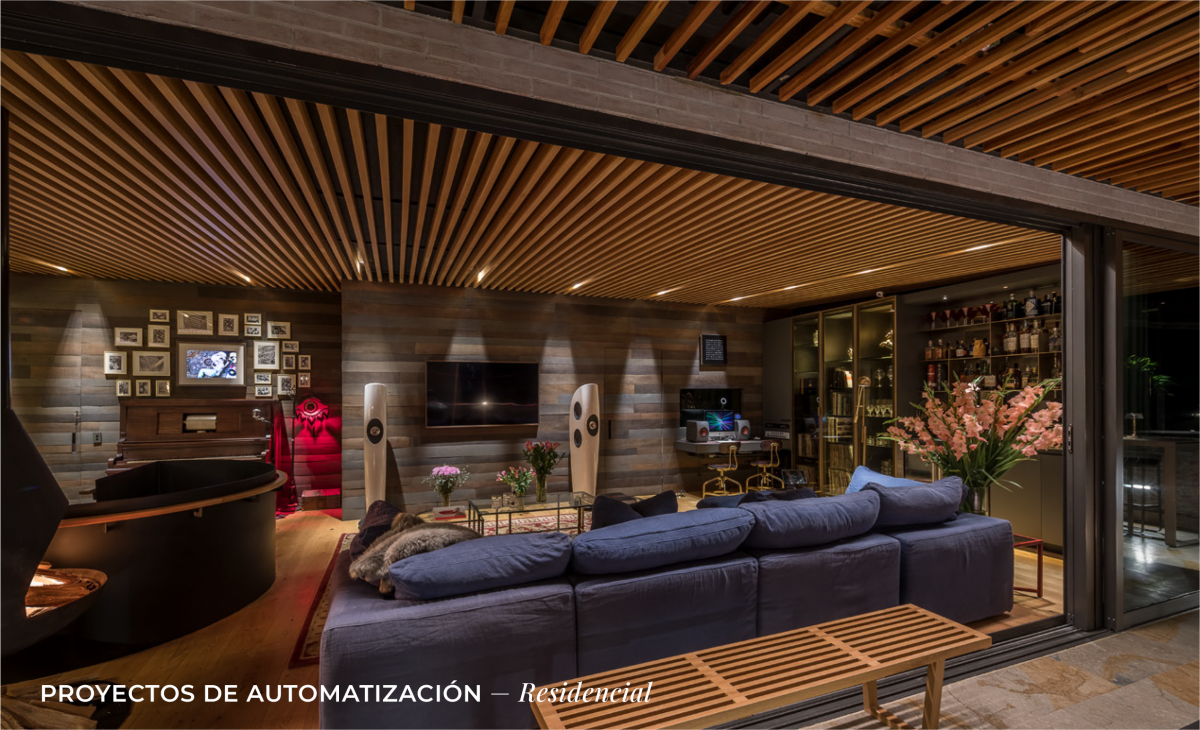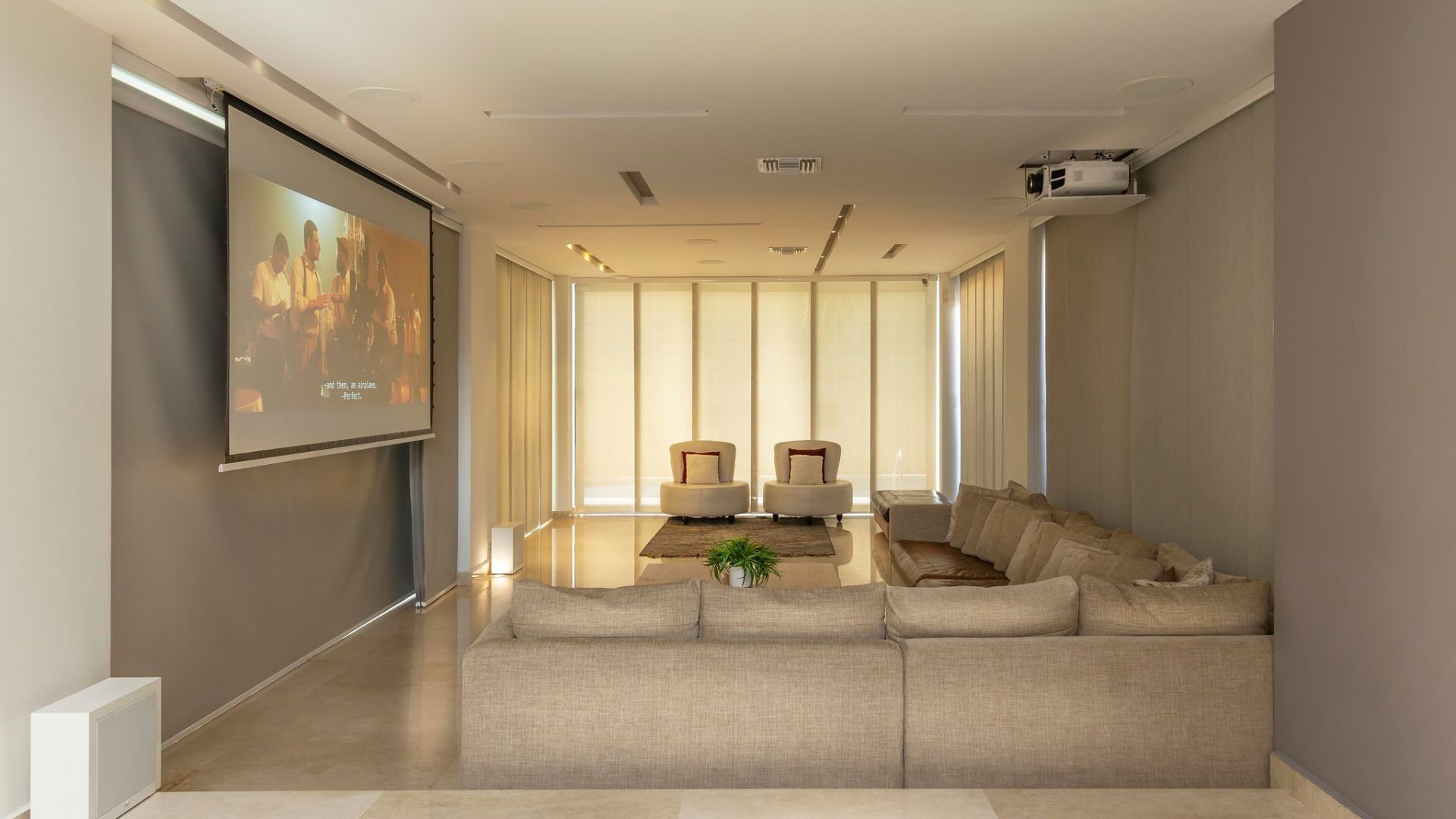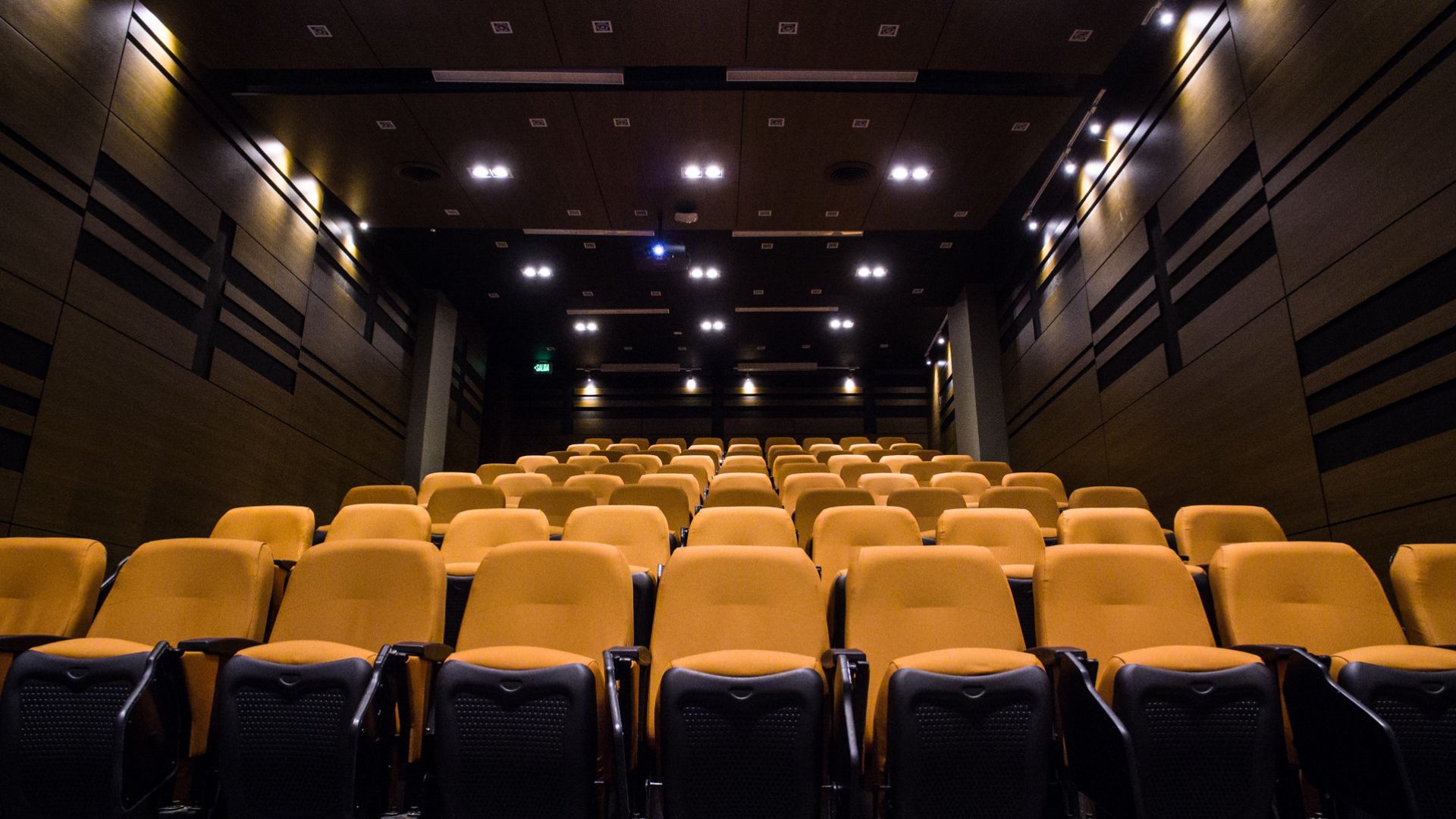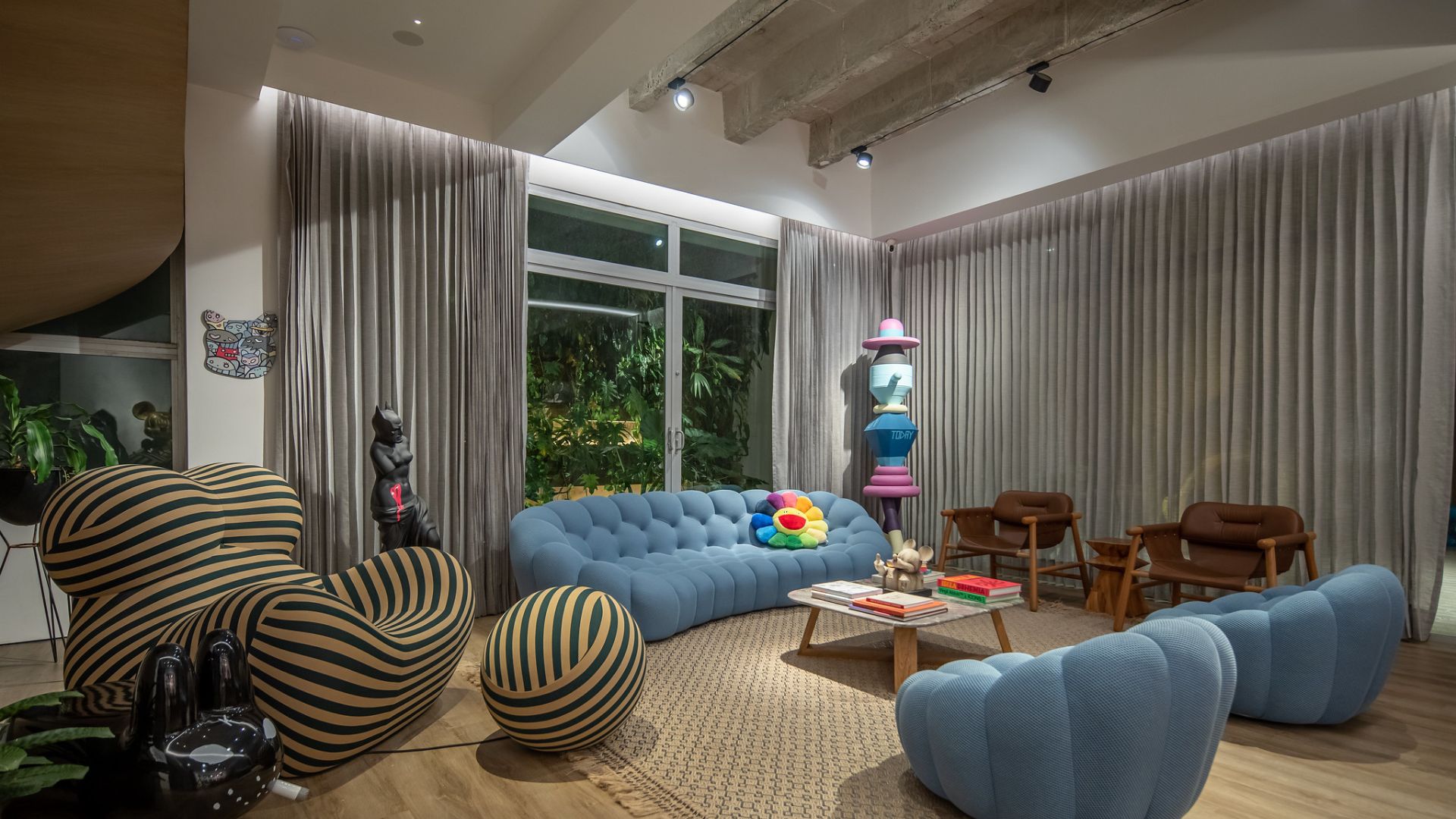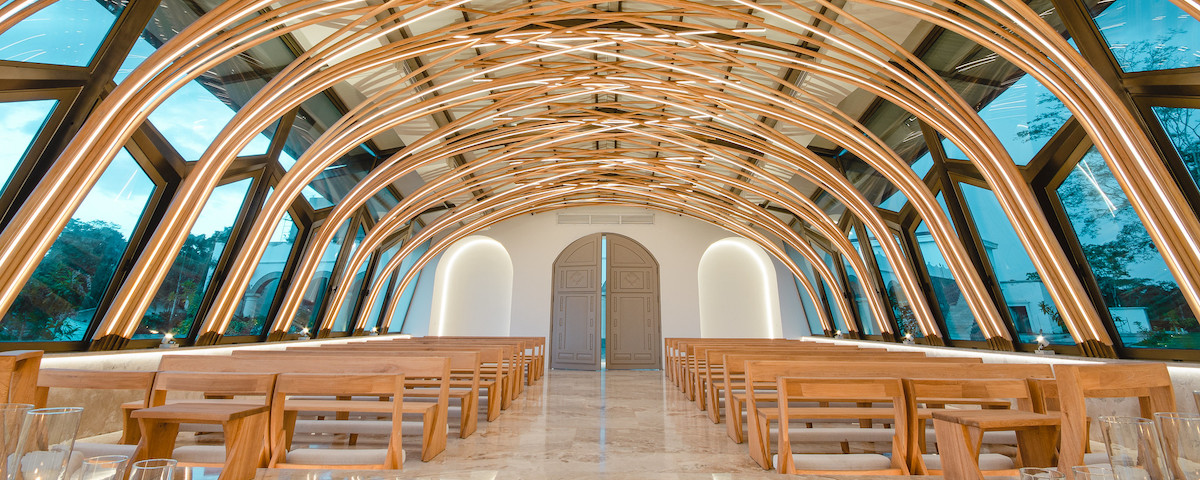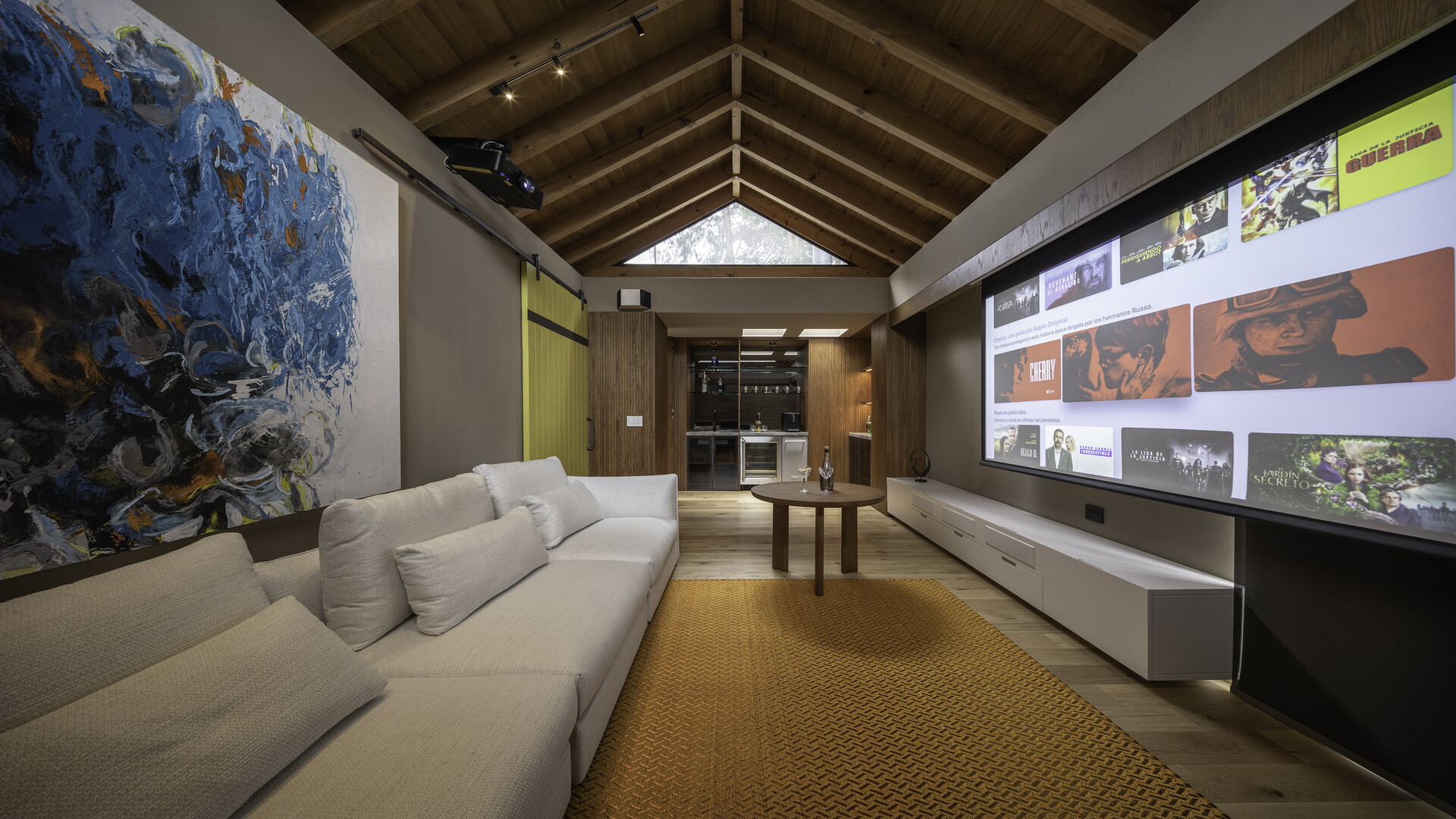Table of contents
- Key Takeaways
- Benefits of Lighting Control and Automation
- Types of Lighting Control Systems
- Considerations for Lighting Control and Automation
- Implementation of Lighting Control and Automation
- Tips for Maximizing the Effectiveness of Lighting Control and Automation
- Let’s innovate together. We’re Here to Help
- Frequently Asked Questions
Key Takeaways
- Energy Efficiency and Sustainability: Lighting control and automation significantly enhance energy efficiency, reducing unnecessary energy consumption through features like motion sensors, daylight harvesting, and scheduling. This not only results in lower energy bills but also contributes to a more sustainable lifestyle.
- Enhanced Comfort and Convenience: Automated lighting systems provide unparalleled convenience, allowing users to customize their environment with the tap of a finger or a simple voice command. This level of control improves comfort by enabling personalized scenes and automated adjustments that cater to an individual’s daily routines.
- Increased Security: Automated and strategic lighting enhances property security, deterring potential intruders by simulating occupancy, illuminating dark exterior areas upon detecting movement, and integrating with security systems for comprehensive monitoring.
- Types of Lighting Control Systems: The market offers a variety of lighting control solutions, from basic manual controls to sophisticated centralized systems, each designed to meet specific needs and preferences whether for simplicity, energy savings, or comprehensive automation.
- Considerations for Implementation: Effective implementation of lighting control and automation requires careful planning around room functionality, integration with existing home automation systems, budget considerations, and choosing between wired or wireless systems based on reliability, installation complexity, and the scope of the project.
- Maximizing Effectiveness: To fully benefit from lighting automation, it’s essential to strategically group lights, utilize presets for different activities, integrate natural light using sensors, and commit to regular system maintenance and updates to ensure continued performance and access to new features.
Benefits of Lighting Control and Automation

modern kitchen and dining area
Lighting control and automation are revolutionizing the way we interact with our environments, offering numerous benefits that extend far beyond simple convenience. Let’s jump into how these advancements can dramatically improve energy efficiency, comfort, and security in our spaces.
Energy Efficiency
One of the most significant advantages of lighting control and automation is the substantial increase in energy efficiency. Automated systems ensure that lights are only on when needed, reducing unnecessary energy consumption. For instance, motion sensors can turn lights off automatically in unoccupied rooms, while daylight harvesting systems adjust indoor lighting based on the amount of natural light available, ensuring that energy is not wasted.
| Efficiency Feature | Energy Savings Potential |
|---|---|
| Motion Sensors | Up to 30% |
| Daylight Harvesting | 20-60% |
| Scheduling and Timers | Up to 25% |
These systems not only contribute to lower energy bills but also play a crucial role in reducing our carbon footprint. By optimizing the use of artificial lighting, we’re taking a big step towards more sustainable living and working environments.
Convenience and Comfort
The convenience and comfort provided by lighting control and automation are unparalleled. Imagine adjusting the ambiance of any room with the tap of a finger, whether it’s dimming the lights for a cozy movie night or brightening a workspace for productivity. Lighting can even be programmed to change throughout the day to match our circadian rhythms, enhancing our well-being.
- Remote Control: Manage your lighting from anywhere, using your smartphone or voice commands.
- Personalized Scenes: Create customized lighting scenes for activities like reading, entertaining, or relaxing.
- Automated Adjustments: Lights adapt to your daily routines, offering the perfect level of illumination when and where you need it.
This level of control and customization enhances the quality of our daily lives, making our spaces more adaptable and responsive to our needs.
Enhanced Security
Lighting control and automation also significantly enhance the security of our properties. Strategic lighting can deter potential intruders by giving the impression that a home is occupied, even when it’s not. Automated lighting patterns can mimic human activity, and exterior lights can be programmed to illuminate if unusual motion is detected, adding an extra layer of security.
- Vacation Mode: Simulate occupancy to deter burglars while you’re away.
- Motion-Activated Lighting: Illuminate dark exterior areas when movement is detected, discouraging trespassers.
- Integrated Security Systems: Combine lighting with security cameras for comprehensive monitoring.
By leveraging the capabilities of automated lighting, we’re not just illuminating our spaces; we’re actively contributing to a safer environment for ourselves and our loved ones. The combination of energy savings, enhanced comfort, and improved security makes lighting control and automation an invaluable addition to modern homes and workplaces.
Types of Lighting Control Systems

nightclub bar illuminated by vibrant purple and pink lighting,
Exploring the different types of lighting control systems reveals a variety of options designed to meet our diverse needs, from simple manual switches to sophisticated, automated solutions. Let’s jump into the specifics of each system and understand how they can transform our spaces.
Manual Control Systems
Manual control systems are the most basic form of lighting control, involving traditional on/off switches or dimmers that we operate by hand. These systems offer simplicity and direct control, allowing us to instantly adjust the lighting according to our immediate needs. Even though their lack of automation, manual controls remain popular for their ease of use and straightforward installation.
Timer-Based Control Systems
Timer-based control systems provide a step up in functionality by allowing us to set specific times for lights to turn on and off. This system is ideal for routine lighting needs, such as outdoor lighting that needs to be activated at dusk and turned off at dawn. It’s an effective way to ensure that lights are only on when needed, helping us save energy and reduce our electricity bills.
Occupancy Sensors
Occupancy sensors take automation further by detecting the presence of people in a room and adjusting lighting accordingly. These sensors turn lights on automatically when someone enters a space and turn them off after a preset period of inactivity, ensuring that lights aren’t left on unnecessarily. Occupancy sensors are perfect for spaces like offices and bathrooms, where lights often get left on accidentally.
Wireless Dimmer Switches
Wireless dimmer switches offer the convenience of adjusting light levels without the need for traditional wiring. These devices can be controlled remotely via smartphones or voice assistants, allowing us to tailor lighting ambiance from anywhere in our home. They’re especially useful in creating the right mood for different activities, whether we’re watching a movie or hosting a dinner party.
Centralized Lighting Systems
Centralized lighting systems represent the pinnacle of lighting control and automation, integrating all of a building’s lighting controls into a single, easy-to-manage system. This setup not only allows for the remote control of individual lights but also enables the programming of complex lighting scenes and schedules across multiple rooms. Centralized systems are ideal for large homes or commercial buildings seeking seamless control over their lighting environments.
Each of these lighting control systems offers unique benefits that can enhance our comfort, improve energy efficiency, and provide the convenience we crave in our modern lifestyles.
Considerations for Lighting Control and Automation
Room Functionality and Lighting Needs
When we jump into the area of lighting control and automation, recognizing the specific needs of each room becomes crucial. Bedrooms require soft, calming lights to promote relaxation, while home offices benefit from brighter, more focused lighting to enhance productivity. Kitchens, the heart of our homes, demand a blend of task lighting for cooking and ambient lighting for dining. Understanding these needs ensures our lighting solutions not only elevate the comfort and functionality of our spaces but also optimize energy usage.
Integration with Home Automation Systems
In today’s tech-driven world, the beauty of lighting control and automation shines brightest when integrated with a broader home automation system. This synergy allows us to orchestrate our lighting with other elements such as climate control, security systems, and entertainment units, creating a seamless, intelligent home environment. The key lies in selecting a lighting control system that’s compatible with existing or planned home automation platforms, ensuring a unified and efficient ecosystem that enhances our lifestyle and simplifies daily routines.
Budget and Scalability
Embarking on the journey of implementing lighting control and automation requires a thoughtful consideration of budget and scalability. It’s not just about the initial investment; it’s about envisioning future needs and potential expansion. We recommend starting with core areas or functions and gradually adding more over time. This approach not only makes the project more affordable but also allows for adjustments based on evolving preferences and technologies.
| Initial Investment | Core Areas | Future Expansion |
|---|---|---|
| Moderate | Bedrooms, Living Room | Entire Home |
Wired vs Wireless Systems
Choosing between wired and wireless lighting control systems often boils down to a matter of personal preference, project scope, and existing infrastructure. Wired systems are renowned for their reliability and are ideal for new constructions or during major renovations. On the other hand, wireless systems offer unparalleled flexibility and ease of installation, making them perfect for retrofitting existing spaces without the need for invasive wiring projects. Both options provide robust control and automation capabilities, ensuring our lighting systems are both modern and adaptable to our changing needs.
Implementation of Lighting Control and Automation
When we’re ready to bring lighting control and automation into our homes or workplaces, understanding the steps involved is key to a successful implementation. Let’s jump into the process, from planning to testing.
Planning and Design
In this phase, we determine our objectives for lighting control and automation. We ask ourselves what we want to achieve—whether it’s energy efficiency, enhanced security, convenience, or all the above. It’s crucial to assess each room’s functionality and lighting needs. For instance, a living room might benefit from ambient lighting control for movie nights, while a home office may require task lighting with minimal glare during work hours.
We then create a detailed plan, mapping out where and how each lighting control component fits into our space. This often involves consulting with professionals who can propose solutions that align with our goals and budget.
Installation and Wiring
For wired systems, installation is generally best handled during construction or major renovations. This minimizes disruptions and allows for the integration of lighting control systems directly into the building’s electrical infrastructure. Wireless systems, on the other hand, offer a less invasive installation process, perfect for retrofitting existing spaces without significant changes to the physical structure.
Regardless of the system type, ensuring that all components are correctly installed is crucial. This includes placing sensors and switches in optimal locations for user convenience and system efficiency. Following wiring diagrams and manufacturer instructions during this phase prevents issues down the line.
Configuration and Programming
Once the hardware is in place, configuring and programming the system is the next step. This stage customizes the lighting control system to our specific needs and preferences. We program scenes for different activities, such as dimmed lights for a movie night or bright lights for reading. Scheduling features allow us to set lights to turn on and off at certain times, enhancing both convenience and security.
The beauty of modern lighting control systems is their flexibility. We can often make adjustments ourselves through user-friendly apps or interfaces, fine-tuning our settings as our needs evolve.
Testing and Troubleshooting
The final step is to rigorously test the system to ensure it operates as intended. We check every component, from sensors and switches to dimmers and automated schedules, verifying that each responds correctly to our commands and schedules. It’s not unusual to encounter minor issues during this phase, which is why troubleshooting is so important. Resolving any glitches or inconsistencies now guarantees our lighting control system works seamlessly from day one.
During testing, we pay special attention to system integration. If our lighting control system is part of a larger home automation setup, it’s vital to ensure it communicates flawlessly with other smart devices. This might involve some additional configuration and fine-tuning to achieve perfect synergy.
Tips for Maximizing the Effectiveness of Lighting Control and Automation

When we jump into the world of lighting control and automation, it’s clear that these systems offer more than just convenience. They transform our living spaces into more efficient, secure, and comfortable environments. To fully harness the power of these systems, we’ve gathered some strategies that ensure we’re getting the most out of our investment.
Grouping Lights and Zone Controls
One fundamental way to maximize the effectiveness of lighting control and automation is by strategically grouping lights and implementing zone controls. This method allows us to manage multiple fixtures as a single unit or create different zones within our space. Here’s why this matters:
- It enhances energy savings by avoiding unnecessary lighting in unused areas.
- We can tailor lighting atmospheres according to the activity within each zone.
- It simplifies control, making it easier to adjust settings for an entire room or zone with a single command.
By thoughtfully grouping lights and using zone controls, we streamline our interaction with our environment, making it more responsive to our daily routines and preferences.
Utilizing Lighting Scenes and Presets
Incorporating lighting scenes and presets is a game-changer. This approach involves setting up predefined lighting configurations that can be activated with a single tap or voice command. Consider the benefits:
- It creates mood lighting for different occasions easily, be it a movie night or a dinner party.
- We can activate energy-saving scenes when the room is not in use, further cutting down on utility bills.
- Presets allow for a consistent lighting experience, eliminating the need for constant adjustments.
Lighting scenes and presets not only add a layer of sophistication to our homes but also contribute to a more energy-efficient and personalized living space.
Integrating Natural Light with Sensors
To take lighting control and automation to the next level, we integrate natural light with sensors. This smart strategy involves using daylight sensors that adjust indoor lighting based on the amount of natural light available. Here’s why it’s a smart move:
- It significantly reduces energy consumption by dimming or turning off artificial lights when enough natural light is present.
- We ensure a perfect balance of natural and artificial lighting throughout the day, enhancing comfort and wellbeing.
- It eliminates the manual effort of adjusting blinds or lights, as the system automatically responds to changes in daylight.
By harnessing the power of natural light, we not only save on energy costs but also enhance the overall ambiance of our spaces.
Regular Maintenance and Upgrades
Like any technology, lighting control and automation systems benefit immensely from regular maintenance and timely upgrades. Keeping these systems in top condition ensures:
- Consistent performance and reliability, reducing the chances of unexpected malfunctions.
- Access to the latest features and improvements through upgrades, keeping our system modern and efficient.
- The longevity of the system, protecting our investment in the long run.
Regular checks and updates allow us to enjoy uninterrupted convenience and efficiency, ensuring our lighting control and automation systems remain a valuable asset in our homes.
Let’s innovate together. We’re Here to Help
Embracing lighting control and automation means stepping into a future where efficiency, security, and comfort are not just ideals, but realities we live by every day. We understand that exploring through the myriad of options available can be overwhelming. That’s where we come in to streamline the process, making it as seamless as possible.
Understanding Your Needs
The first step in our journey together is understanding the specific requirements of your space. Whether it’s a cozy home, a bustling office, or a sprawling commercial area, different environments demand unique lighting solutions. We assess every corner, ensuring that our approach is not just about installing technology, but about enhancing your lifestyle and work environment. Remember, the goal is to tailor a system that speaks directly to your needs, maximizing energy efficiency and utility while minimizing complexity.
Choosing the Right System
With numerous options on the market, from smart bulbs to comprehensive lighting networks, making a choice can seem daunting. We’re here to demystify this process. Wired systems offer unparalleled reliability and are ideal for new constructions, while wireless systems provide flexibility and are perfect for retrofitting existing structures. Each has its advantages, and our role is to guide you toward the most suitable fit for your scenario. Here’s a quick overview:
| System Type | Reliability | Installation | Best Use |
|---|---|---|---|
| Wired | High | Complex | New Constructions |
| Wireless | Good | Easy | Retrofitting |
Implementing Your Lighting Control System
Once we have pinpointed the perfect system, the next step is implementation. We take care of everything, from planning and installation to testing and fine-tuning. Our team works diligently to ensure that your transition to smarter lighting is smooth and hassle-free. Throughout this process, we focus on grouping lights and implementing zone controls, enabling you to manage your environment effortlessly.
Beyond Installation
Our commitment doesn’t end with installation. We believe in nurturing a lasting relationship with you. We’re always ready to assist with regular maintenance, system upgrades, and any updates that might enhance your lighting automation experience. Integrating new technologies and embracing advancements is part of our commitment to ensuring your lighting system remains state-of-the-art.
Frequently Asked Questions
What are the benefits of lighting control and automation?
Lighting control and automation offer improved energy efficiency by allowing precise control over lighting usage, enhancing comfort with easy adjustments to lighting settings, and increasing security through scheduled lighting scenes or presence simulation.
How do lighting control systems improve energy efficiency?
By enabling the precise control and scheduling of lighting, these systems ensure lights are on only when needed, reducing unnecessary energy consumption and leading to significant energy savings.
Is it better to choose wired or wireless lighting control systems?
The choice depends on your specific needs and the structure of your building. Wired systems are more reliable and suitable for new constructions, while wireless systems offer more flexibility and are easier to install in existing buildings.
How can I maximize the effectiveness of my lighting control system?
Maximize effectiveness by grouping lights into zones, using lighting scenes and presets for different activities, integrating natural light with sensors, and performing regular maintenance and upgrades to keep the system efficient.
Can lighting control and automation systems be integrated with natural light?
Yes, these systems can integrate with natural light using sensors that adjust artificial lighting based on the amount of daylight, enhancing energy efficiency and comfort.
What steps are involved in implementing lighting control and automation?
The implementation process typically includes planning to identify specific needs, installation of the chosen system, testing to ensure functionality, and fine-tuning for optimal performance. Ongoing support and system upgrades are also crucial.
Why is it important to consider the specific needs of each room when implementing lighting control?
Considering the specific needs of each room ensures that lighting control and automation enhance both comfort and functionality, tailoring lighting settings to activities and preferences in each space.
How often should lighting control systems be upgraded or maintained?
Regular maintenance is key to ensuring the reliability and efficiency of your lighting control system. Upgrading every few years is recommended to benefit from advancements in technology and further enhance system performance.
Our Portfolio
Table of contents
- Key Takeaways
- Benefits of Lighting Control and Automation
- Types of Lighting Control Systems
- Considerations for Lighting Control and Automation
- Implementation of Lighting Control and Automation
- Tips for Maximizing the Effectiveness of Lighting Control and Automation
- Let’s innovate together. We’re Here to Help
- Frequently Asked Questions
